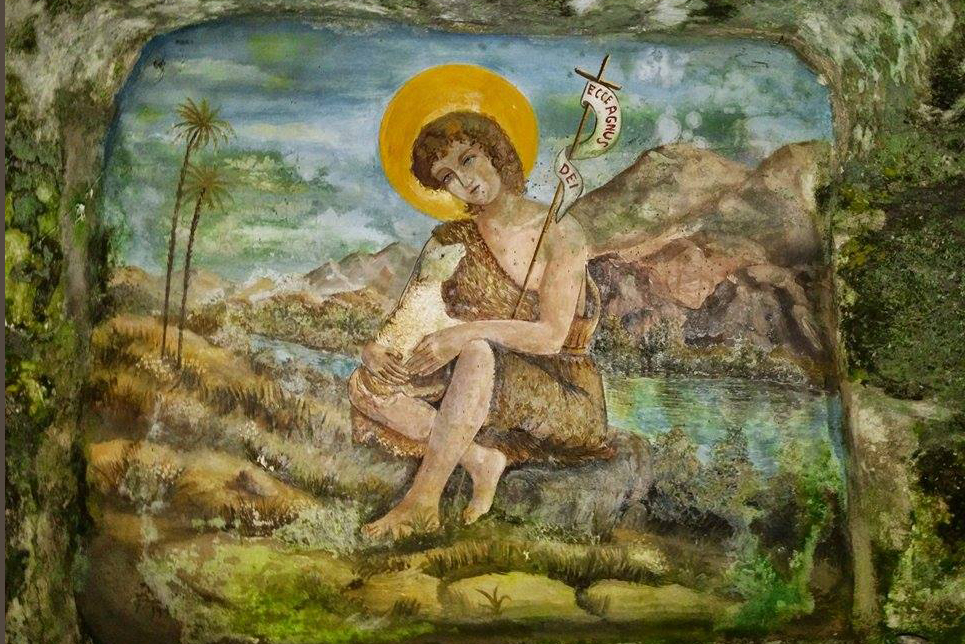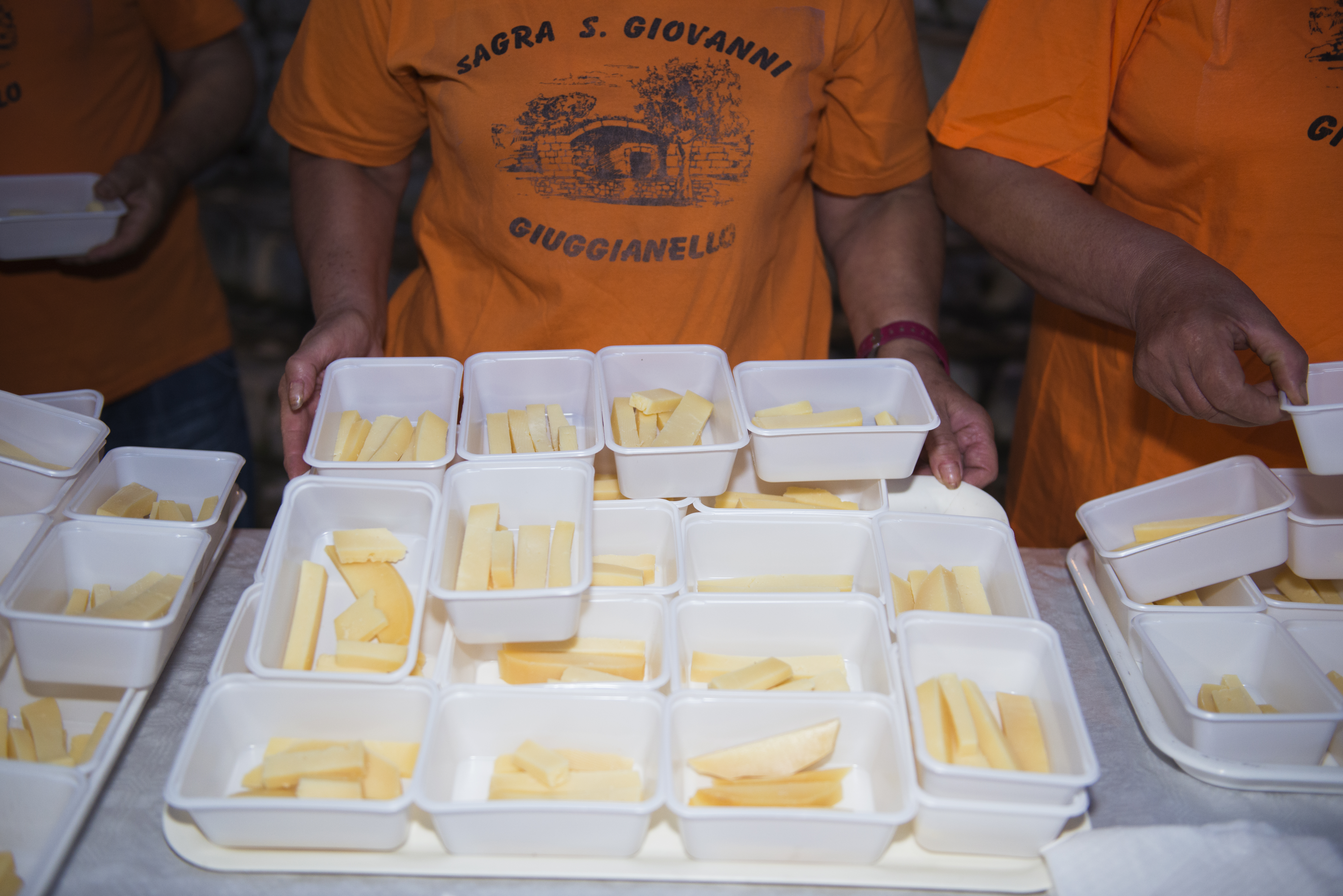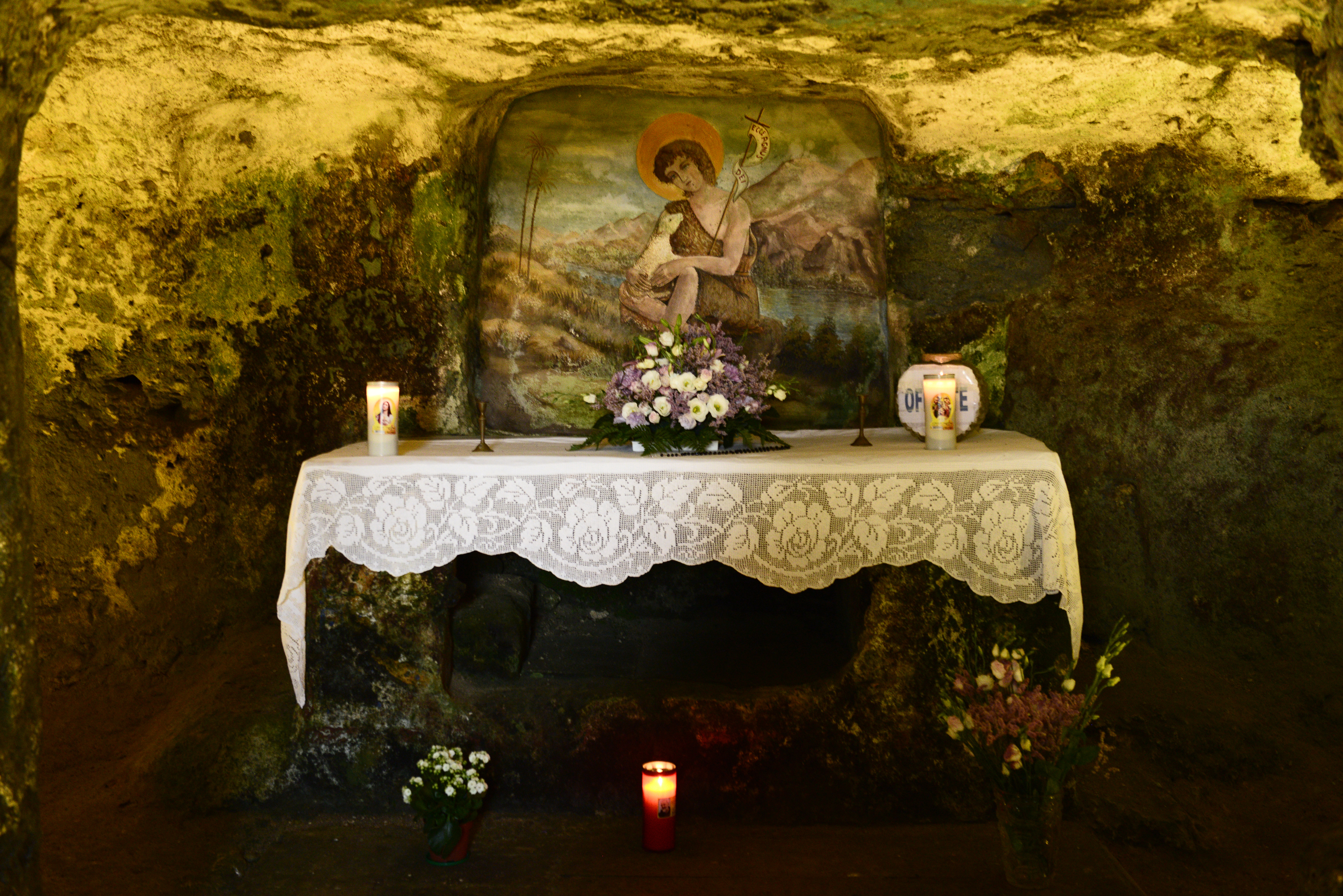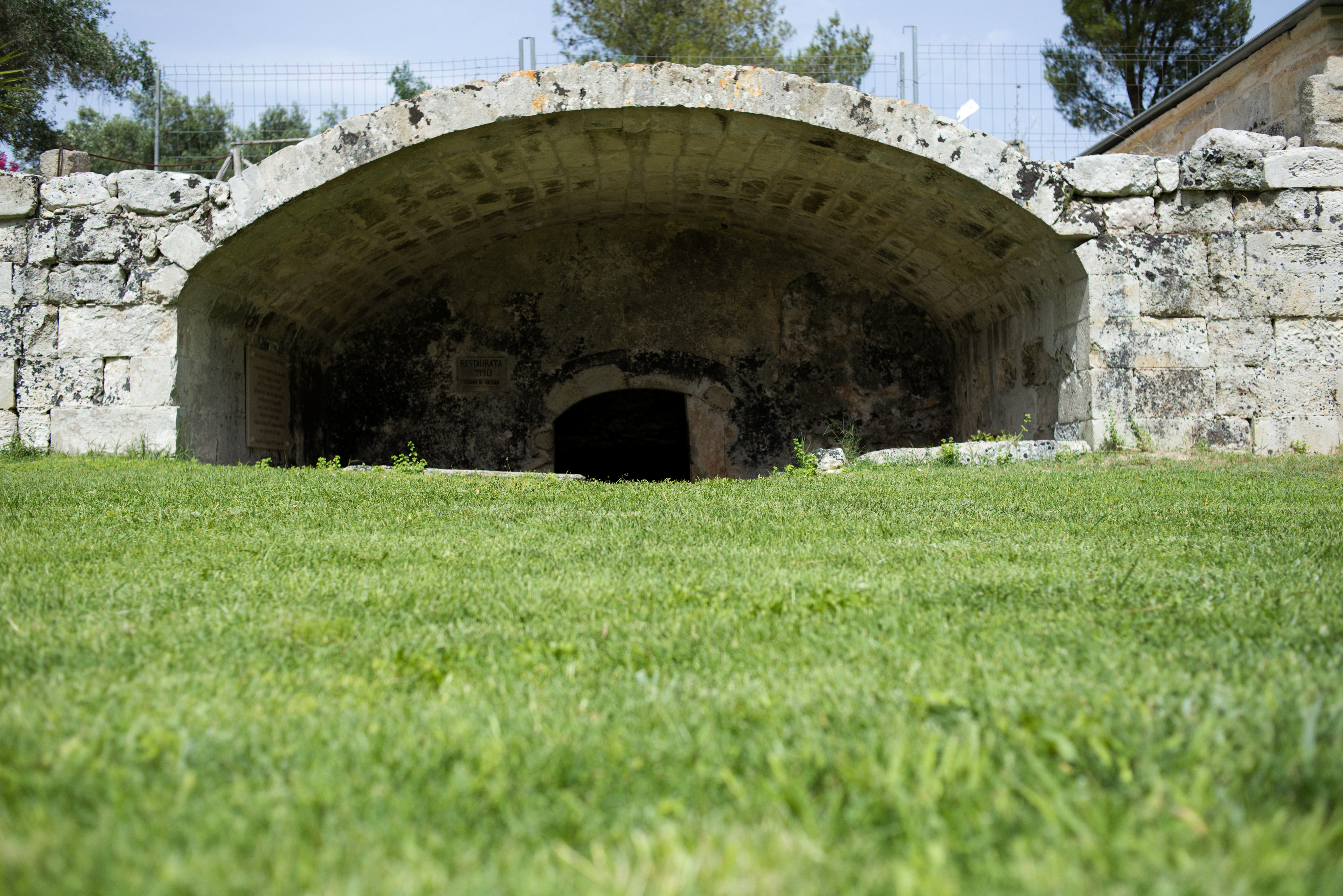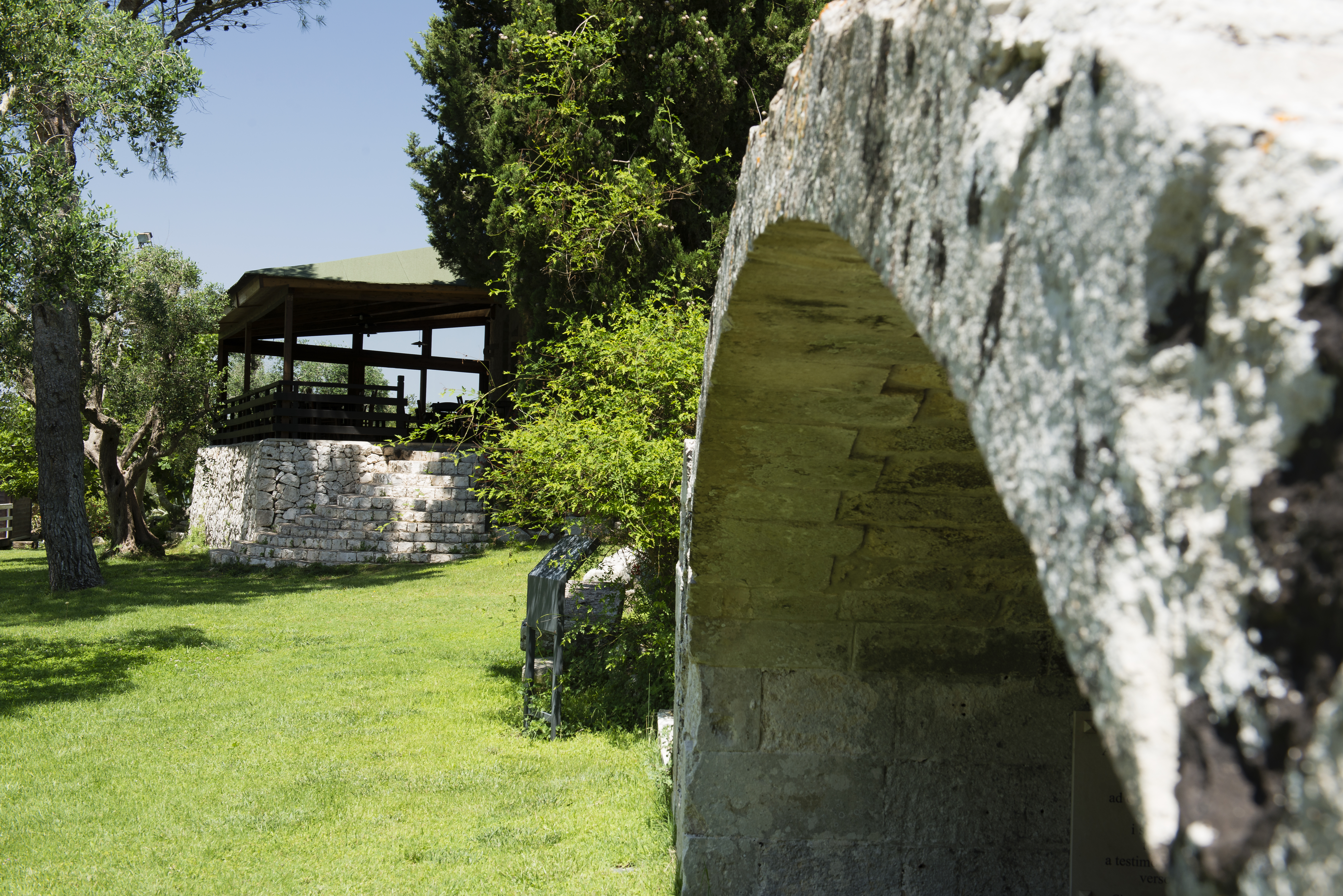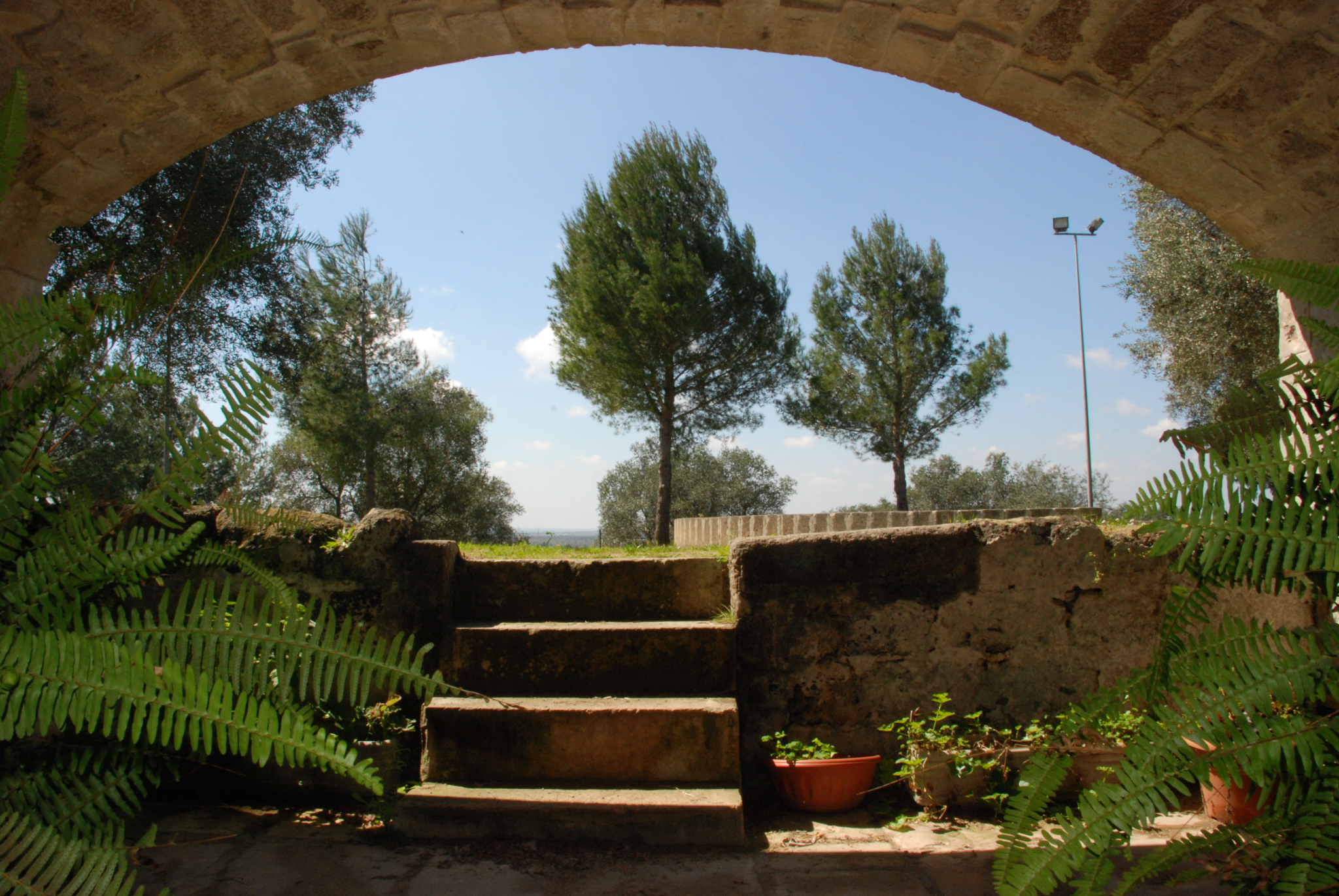On hill of San Giovanni, in Giuggianello, there is a place that bears traces of ancient rites and religious beliefs. The diners of the little restaurant taste the dishes with a view and before the evenings or a lunch, Antonio, the owner of the Fòllaro, plays the role of Cicero and takes them for a walk through time. He approaches the grotto, the rocky church of St. John the Baptist, and begins his fascinating stories…
The presence of the Crypt of St. John the Baptist is a testimony of Basilianism in Salento. An artificial cavity excavated in the rock, with wall decorations, has a three-aisle structure, separated by two central pillars in the excavation. The origins of the Byzantine Crypt are, perhaps, to be found in the settlement of Basilian monks in Salento (about the first century of the year 1000). Here, the monks celebrated religious services with Greek Orthodox rite. In the following years, persecuted by successive popes, they eliminated the rites, the cave fell into disuse and, with the passing of the years, devotion to the Saint dispersed.
But an ancient popular legend tied it forever to Giuggianello and the destiny of its inhabitants. Beyond that hill, in fact, where the crypt stands today, lived the old “massaro” of the Armino farm. His daughter, who was in poor health, was often ill, and helped her family as much as she could by taking the sheep to pasture near the rock church. Right there, one day, Saint John appeared to her and promised her eternal healing. The daughter was healed and the father, as a sign of gratitude, restored the crypt to its former glory. Here, the parish priest of the time, every 24th June, the feast of the Saint, celebrated mass, and the farmer, at the end of the religious service, offered the faithful wine and cheese as a sign of devotion. The cave was embellished at that time. We are about 1700 and the date engraved at the entrance still bears witness to this. And in that old farmyard in front of the Crypt, intoxicated by the wine, the faithful danced to the sound of a pinch. Thus was born one of the first festivals of the Salento tradition that still celebrates today. On the 24th of June every year, during the festivities of the Sagra di San Giovanni, at the top of the hill, in fact, the inhabitants of Giuggianello carry on the tradition of the old farmer, dispensing cheese and wine during the festival.
There are many different legends and stories told and linked to this Crypt and Antonio will tell them one by one. Magical events, ancestral rites, dances and drums that are lost in the night, beliefs and strange astral combinations that give life, even today, to fascinating phenomena that leave you breathless, such as what happens on the day of the winter solstice, the only day when the sun’s rays hit and illuminate the fresco and the Saint, creating a unique play of light and color. In ancient Greek Orthodox religion, in fact, the two solstices were called “doors”: “door of the gods” the winter one and “door of men” the summer one. And the monks, who know one more than the devil, will certainly not have left the light that illuminates the door of the gods to chance.
